By Jekhan Aruliah
I have so often heard from well meaning cash rich Diaspora that they can’t find sensible investment opportunities in the North. As the Good Book says, “seek and ye shall find”. For example, look at the Northern fisheries industry.
It may surprise you to hear that the Northern Province has about 40%* of Sri Lanka’s coastline. Surprising because looking at a map of the whole country, the Northern Province seems to be a much smaller sector of Sri Lanka. However, on closer examination it has the most convoluted coastline which includes many islands, spits and lagoons. All the watery peripheries of these islands, spits of land, lagoons, and the various other ins and outs add up. If you pedalled your tricycle along the saltwater coasts of every bit of Sri Lanka you would spend 40% of the trip in the Northern Province. (*40% is the figure used by the Asian Development Bank in the report I refer to later in this article).
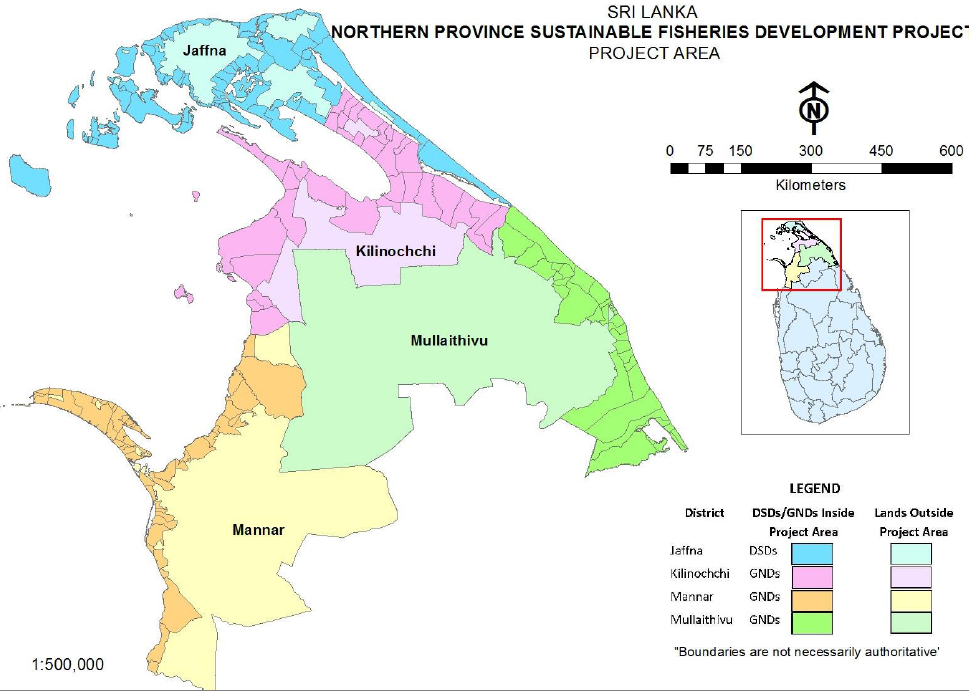
With this lengthy coastline The Northern Province is blessed with major opportunities for fisheries, aquaculture, and tourism. All four districts in the Northern Province have significant coastal access. Without intending to overlook the great potential for coastal tourism, this article will focus on the potential for the fisheries and seafood industry. A potential that offers opportunities to small fisher communities all the way to large businesses.
The map above of the Northern Province is from an ADB (Asian Development Bank) report on sustainable fisheries development in Sri Lanka. It shows those Grama Niladhari Divisions (GNDs, these are similar to villages for administrative purposes) which have a significant fishing community. This map indicates how the fishing industry can bring prosperity to a very significant proportion of the Northern community.
This ADB report states “In 1983, prior to escalation of the conflict, the Northern Province, which has 40% of the nation’s coastal belt, accounted for 40% of its marine fish catch”. Data from the Ministry of Fisheries for 1981 which I found in a report by the United Nations’ Food and Agriculture Organisation (FAO) shows that in that year Jaffna District (until 1984 Killinochchi was part of Jaffna District) contributed 25% of Sri Lanka’s coastal fish production, with Mullaitivu and Mannar contributing a further 13.9%.
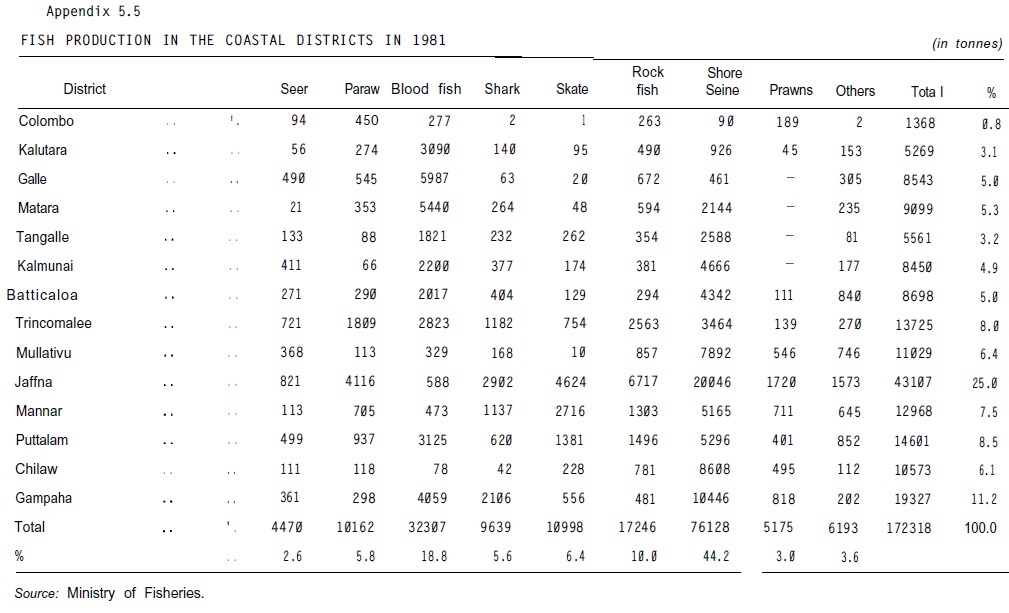
The Sri Lankan Civil War had a terrible impact on Northern fishing from which it has still not made much progress recovering. In 2017, according to figures by the Sri Lanka Central Bank, marine fisheries in the Northern Province in 2017 were only 19% by tonnage and 15% by rupee value of Sri Lanka’s total fisheries catch. Still less than half its pre-war 40% share. There is evidently huge scope for the North to at least recover its share more than doubling it back to the pre-war 40%.
Innovative Fisheries Developments
Pilot projects have already been done proving the enormous potential for new and novel investment in Northern fisheries. According to the National Aquaculture Development Authority (NAQDA) report for 2018
- Sea Cucumber farming is carried out “by private sector in Mannar, Kilinochchi and Jaffna. 28.75 Mt (wet) were harvested from ponds and pens during 2017”.
- In the North and Puttulam “Sea weed cultivation in 2017 was 692 Mt (wet).”
- Sea bass farming, in large offshore cages, is being done offshore in Tricomalee. In 2017, “173 Mt of sea bass were harvested from these sea cages”.
Sea Bass farming is done in offshore cages in Trincomalee run by Oceanpick, a company founded in Sri Lanka in 2012. In 2019 this remains the only such offshore cage farm. In the seven years between 2012 and 2019 no other companies have brought into production similar installations in Sri Lanka. In 2019 Oceanpick received Best Aquaculture Practice Certification from the Global Aquaculture Alliance, showing that this Sri Lankan business can compete at international standards.
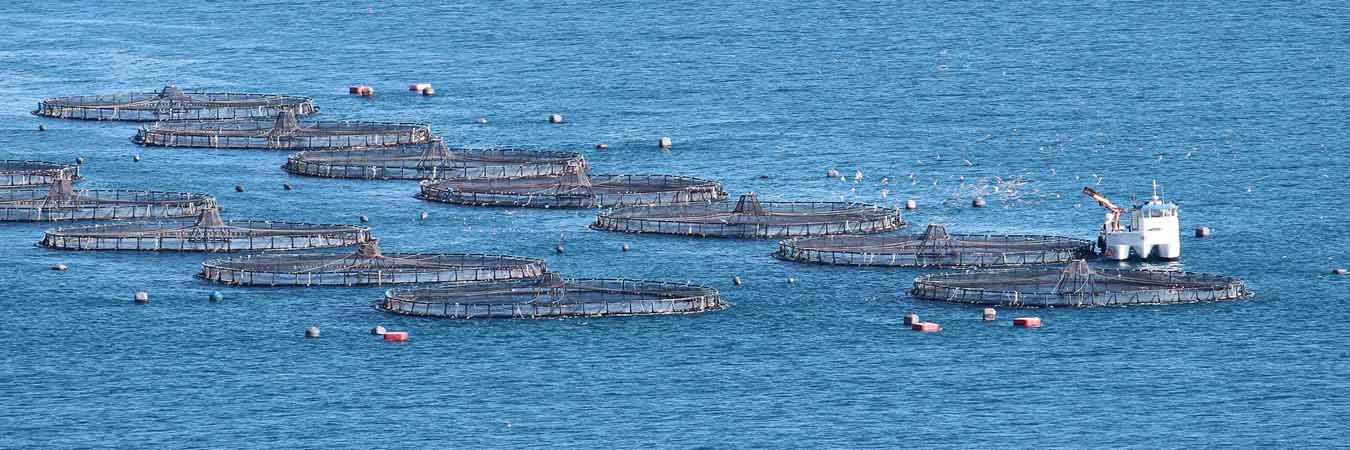
While Trincomalee has the benefit of deep waters suitable for large cages, there are areas in the Palk Strait from Mannar to Jaffna that are suitable for small cage farming. The NORAD report states:
“the potential area resources for marine fish farming are the areas of 8-12m depth, especially in Palk Strait from Mannar up to Jaffna, but they are only suitable for small-volume cage farming. Therefore, it is recommended that NAQDA makes a small-volume cage farm zone (a model aqua park) in e.g. the Delft Channel, which has some 60 km2 potential suitable area”. The report goes on to say “The farmers could be fishers, who only operate one raft or company/cooperative structures having several rafts”.
A report published in 2017 by the Norwegian NGO NORAD states regarding Sea Cucumber: “The market among especially Chinese ethnic seems insatiable, the area resources of Sri Lanka are unlimited, and the production does not negatively impact the environment”. To be clear, this report states there is “insatiable” demand coupled with an “unlimited” supply which is an entrepreneur’s dream!
The NORAD report states “seaweed farming is a proven, low tech, low investment and most successful intervention in S and SE Asia creating livelihood options among the poorest coastal fisher families. They can reach very attractive income levels with only minute investments and fast cropping cycles”. The report goes on to say “According to [the Hayleys Aquagri] website, the price paid to the farmer is SLR 50/kg (USD 0.36) dry seaweed matter. They use the example of a farmer family having 45 rafts, producing 900kg, which generates an income of SLR 45,000 every 45-day”.
Another section of this NORAD report states: “From discussions with other farmers doing sea cucumber farming in nearly similar sea conditions as seaweed farming, considered to start double cropping with seaweed, as the floating rafts would not interfere with the sea cucumber. Having different financial capacity, they wanted to sell the seaweed on the open market. It would seem like a good idea, as they already occupy the sea area, and actually both productions do not cause any pollution. Furthermore in sea cucumber farming a major task of the work force is simply to be present to avoid theft, and that time might as well be used for attending the seaweed culture”.
The problem of Sea Cucumber theft is described in the NORAD report, which states: “One professional diver (thief) can collect 50 animals in just 5 minutes. He dried/processed the ‘sand fish’ and sold it depending on the size at:
- 15 pieces/kg - USD 124/kg
- 20 pieces/kg - USD 110/kg
- 30 pieces/kg - USD 96.5/kg
- 50 pieces or more/kg at same or lower price
NAQDA informed that the farm gate price was USD 153/kg, and the export price USD 250”.
Apparently in just 5 minutes the diver can make US$100. That’s US$1,200 per hour! A good clean alternative to politics for those who can swim well!
It seems that small-volume cage farming, seaweed, and sea-cucumber all offer considerable income generating opportunities for the Northern fishing communities. Opportunities that don’t require large capital investment, though they do require the fisherfolk to build their expertise and put in their labour.
Initiatives in progress by the ADB provide a foundation for these opportunities. According to the NAQDA 2017 report:
“ADB has taken initiations to commence the following projects in Northern Province under the Northern Province Sustainable Fisheries development Project:
- Establishment of Sea Cucumber Hatchery, Mullaithivu
- Establishment of Seaweed Tissue Culture Laboratory, Jaffna
- Establishment of Mud Crab Hatchery, Mannar
- Establishment of Coastal Aquaculture Development and Training Centre (CADTC), Mannar”
Hatcheries and Tissue Culture Laboratories are the foundations of a potentially formidable industry. But they are only foundations. Investment needs to come to build the businesses, either private sector or working with the fishing cooperative societies. Investment and effective implementation to create businesses that will grow and harvest and process and sell the sea cucumber, seaweed, crab, barramundi and other fruit of the sea.
Bureaucracy
One of the great disincentives to invest is the bureaucracy involved. The Norwegian report offered this diagram below to illustrate a procedure as twisty and complex and lengthy as the Northern Province’s coastline.
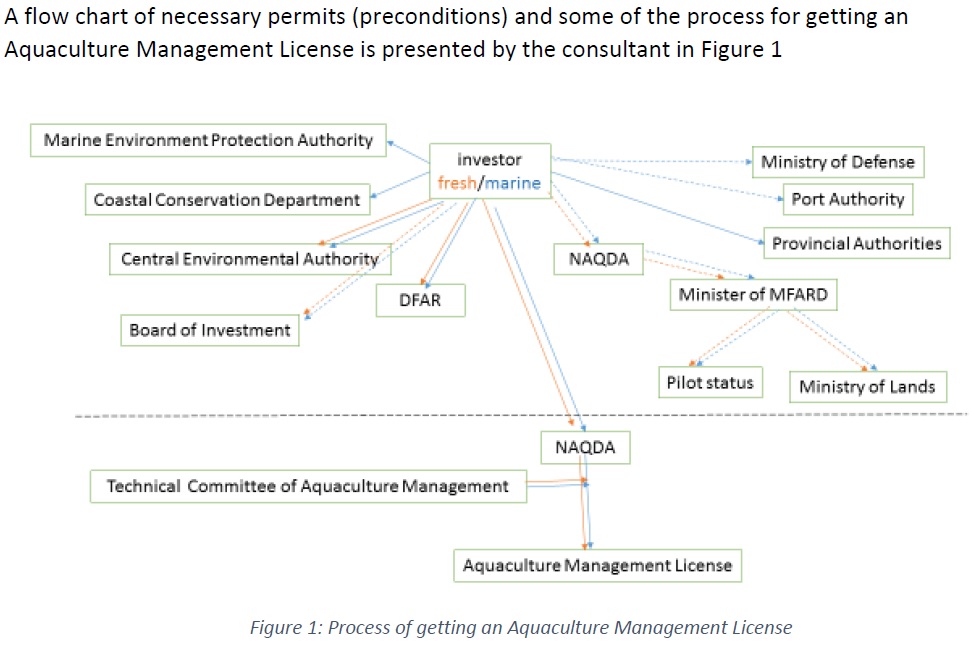
The Norwegian consultant comments “NAQDA will forward it to MFARD, who may recommend it to the Ministry of Lands (ML) holding the authority over the land and sea area (until 10 nautical miles). The procedure at ML is very time consuming, and 2-3 years has been mentioned.”
I myself know of a project that aimed to process seaweed in the Northern Province. By adding value, (in the first instance simply drying, cleaning, baling and exporting the bales) getting a far better price for the North than selling the stuff wet for Rs50 per kilogram. The project lost its momentum, frustrated by months of waiting for phones to be answered in the cavernous Sri Lankan bureaucracy. The frustrated promotors moved on to non-coastal opportunities.
Seafood Exports and Export Markets
According to the Sri Lanka Export Development Board (EDB) the major markets for Sri Lankan seafood are the USA, Japan, and the European Union (Italy; France; Netherlands; Germany; United Kingdom). These are markets where the Sri Lankan brand already has an established though small presence. Countries where there are already companies importing Sri Lankan seafood who understand how to negotiate each country’s requirements for food safety and import regulations. Regulations which are likely to be particularly tough for taking perishable seafoods into the USA and the European Union. Those companies who are already able to import seafood into foreign markets should be importing more, and helping others to import.
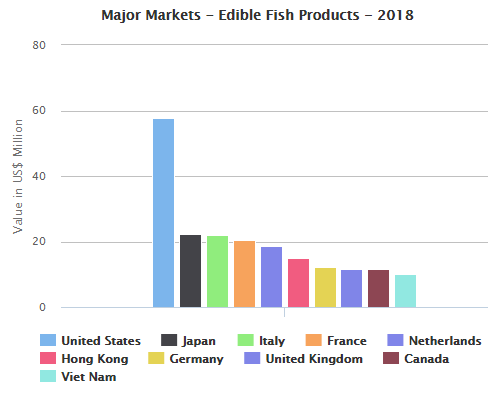
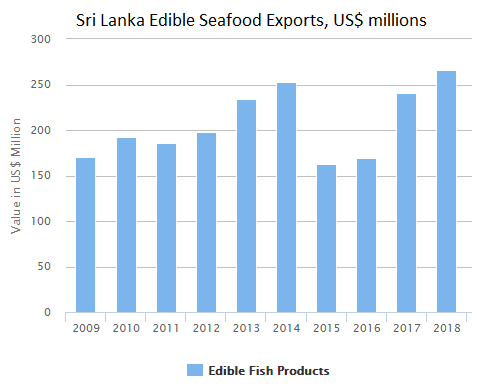
Sri Lanka’s edible fish exports in 2018 exceeded US$250 million, according to data from the Sri Lanka Export Development Board. While not an insignificant amount, this amounts to less than 2% of Sri Lankan GDP. Sri Lanka has extensive coastlines in a rich fisheries environment with potential both offshore and onshore. We should expect more!
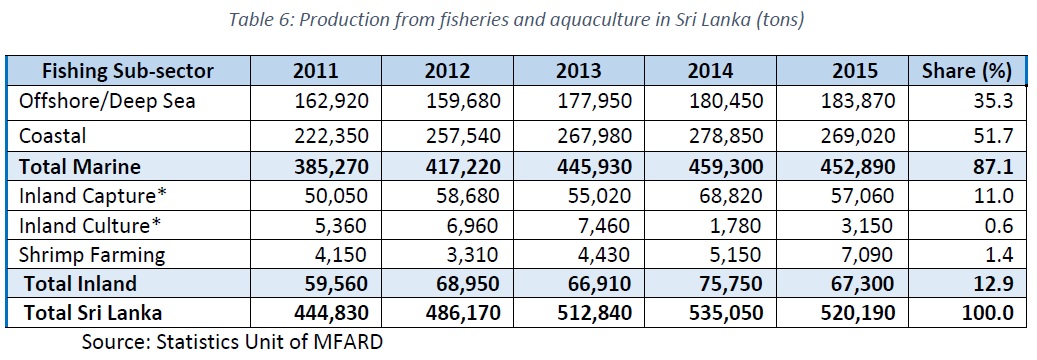
With well managed investment the fisheries and aquaculture industry can make a far larger contribution to the Northern, and the Sri Lankan, economy.
And not forgetting Tourism
And that’s without even starting on the huge potential of coastal tourism. The photograph below is taken by me on my cheap smartphone somewhat obscured by the sea spray. We were on a 2+ hour trip to a fish trap belonging to the family of a friend, in his small fishing boat. A few kilometres offshore from Passaiyoor in Jaffna, the fish trap is in water less than 5 feet deep. The trap held crab, cuttlefish as well as just fish. A treat to watch while snorkelling, and later a treat to eat cooked by my friend’s mother. But I will come back to this in another article.
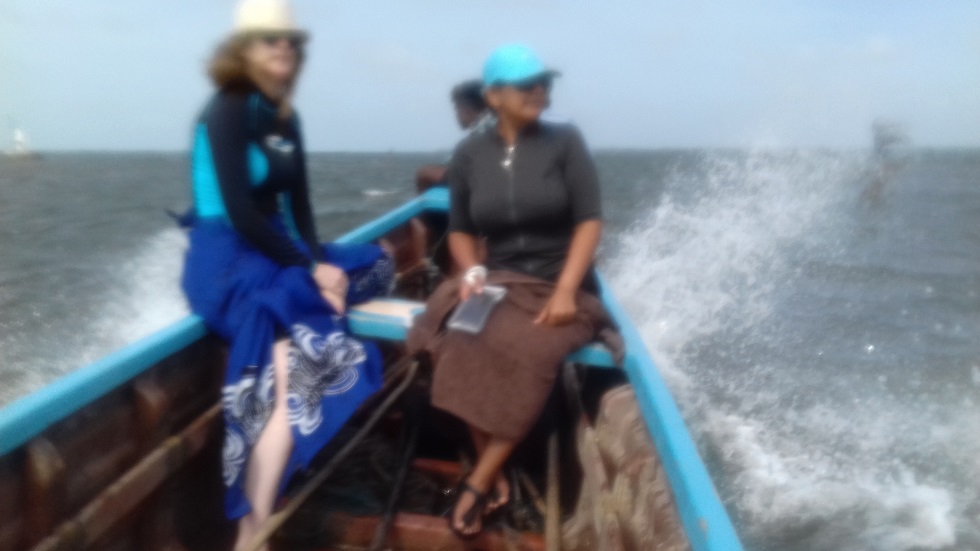
( — The writer Jekhan Aruliah was born in Sri Lanka and moved with his family to the UK when he was two years of age. Brought up in London, he graduated from Cambridge University in 1986 with a degree in Natural Sciences. Jekhan then spent over two decades in the IT industry, for half of which he was managing offshore software development for British companies in Colombo and in Gurgaon (India). In 2015 Jekhan decided to move to Jaffna where he is now involved in social and economic projects. He can be contacted at jekhanaruliah@gmail.com — )

